
Mourning Jewelry
Explore the centuries-old tradition of mourning jewelry, uncovering its symbols, materials, and the stories behind these sentimental tributes to lost loved ones

Remembering The Dearly Departed Through Jewelry
Mourning jewelry holds a unique place in the history of adornment, blending beauty with the solemnity of loss. Emerging as a cherished tradition centuries ago, these pieces served as wearable tributes to loved ones who had passed, allowing the bereaved to keep their memories close. From the dark allure of black enamel and jet to the personal touch of woven hair, mourning jewelry was steeped in symbolism and sentiment. As we explore the origins, materials, and styles of these artifacts, we gain insight into how societies expressed grief, commemorated life, and preserved emotional connections through finely crafted keepsakes that went beyond mere ornamentation.
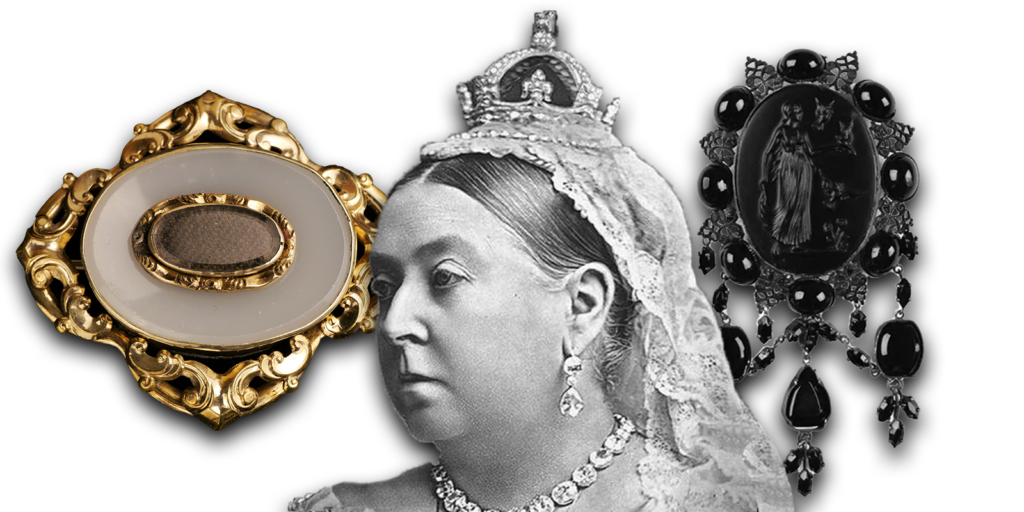
What is Mourning Jewelry?
Mourning jewelry, a powerful symbol of remembrance, was carefully crafted to honor the memory of loved ones who had passed away, allowing people to carry a piece of their legacy daily. This unique form of jewelry was not limited to women; men also wore mourning pieces, such as cufflinks, rings, and pocket watches, reflecting the universal nature of grief across genders. Black enamel became a signature element in mourning jewelry, signifying sorrow, though other materials like dark tortoiseshell, jet, and even onyx were popular choices.
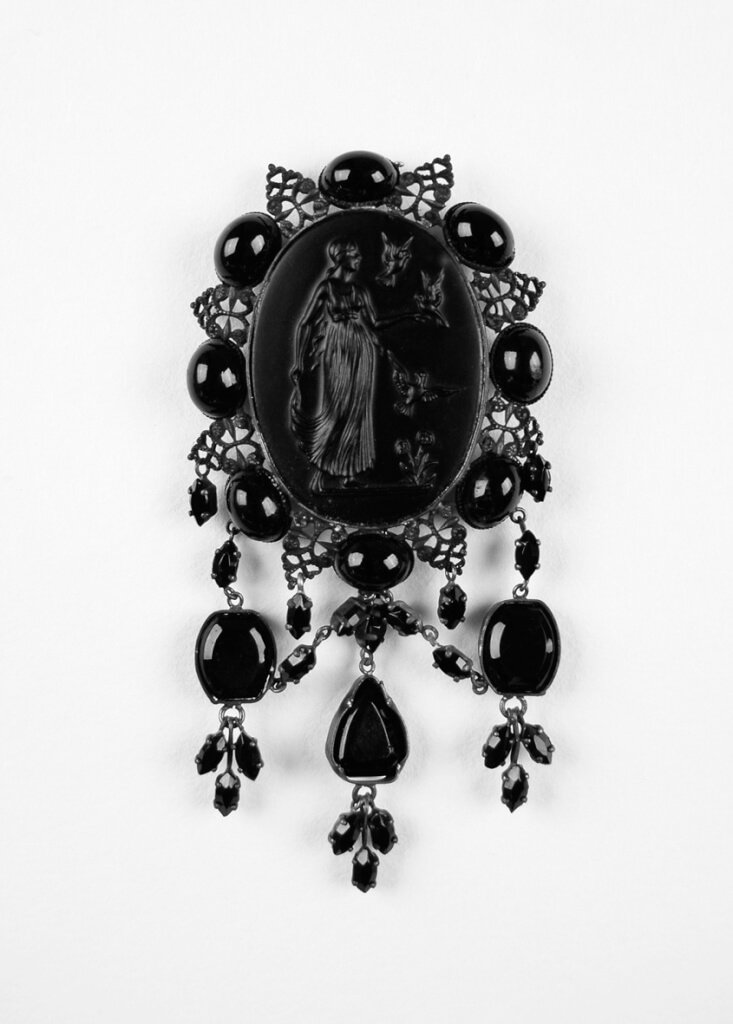
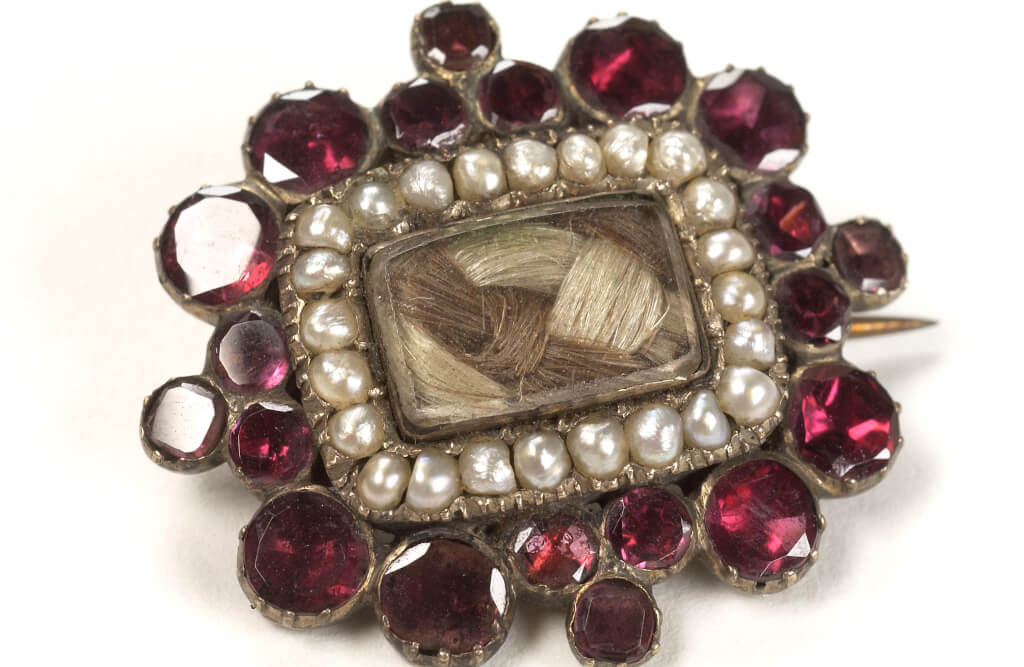
Many pieces contained personal touches, such as a lock of hair from the deceased, making each item deeply meaningful. White enamel, on the other hand, was used in cases where the deceased was an unmarried woman or a child, symbolizing purity and innocence. Beyond their somber function, mourning jewelry pieces were intricately designed, often featuring symbols like willows, urns, and weeping figures, serving as lasting tributes that reflected the social and cultural attitudes toward death and remembrance during their time.
The Georgian Era
The origins of mourning jewelry trace back to the Georgian era, spanning from 1714 to 1830, a period named after four English kings: George I, George II, George III, and George IV. During this time, mourning jewelry became both a fashionable and emotional response to loss, evolving into a prominent trend among the upper and middle classes. These pieces were not merely accessories; they served as visible expressions of grief and respect for the deceased. Often created from materials like gold and embellished with black enamel, these pieces frequently bore designs of coffins, skulls, and grave-digging tools, reflecting the era’s fascination with mortality and the macabre.
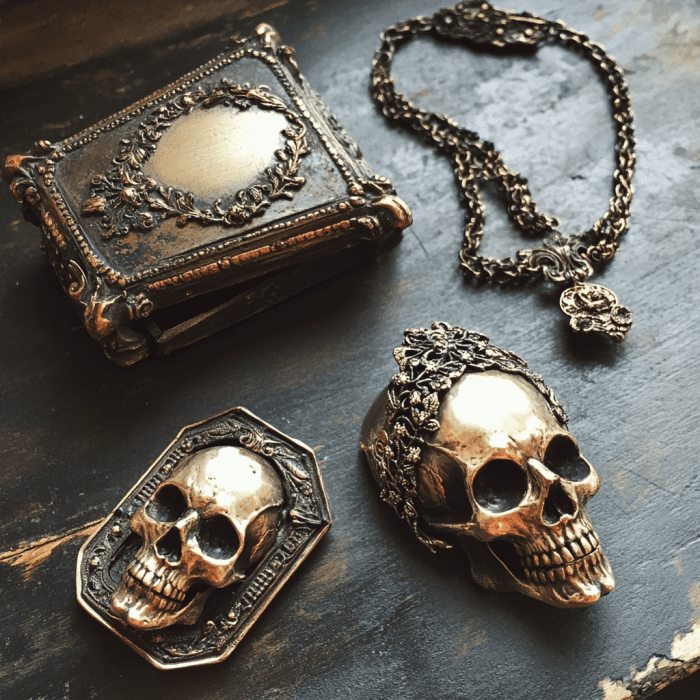

In Georgian mourning jewelry, symbolism played a significant role. Skulls and skeletons were common motifs, intended as “memento mori” reminders of death’s inevitability, urging wearers to contemplate their own mortality. This era’s mourning pieces often included intricate depictions of funeral scenes, weeping willows, and urns, adding a sentimental and somber touch to their otherwise elegant designs. Alongside these symbols, pieces could contain locks of hair from the deceased, further personalizing them and strengthening their sentimental value. As mourning jewelry gained popularity, it reflected both societal attitudes toward death and a broader cultural acceptance of mourning as a public display of grief, laying the groundwork for the elaborate mourning traditions that would follow in the Victorian era.
The Victorian Era
Mourning jewelry experienced a resurgence during the Victorian era, spanning Queen Victoria’s reign from 1837 to 1901, and evolved to reflect a softer, more sentimental style. Unlike the macabre symbols of the Georgian era, Victorian mourning jewelry featured motifs such as clouds, weeping willows, angels, and urns. Many pieces were inscribed with phrases like “In Memory Of” or “Lost but Not Forgotten,” embodying the era’s deep emotional connection to remembrance. This tradition reached its height when Queen Victoria entered a period of prolonged mourning after the death of her beloved husband, Prince Albert, in 1861. For the following forty years, she wore only black clothing and adorned herself with pearls, which symbolized purity and tears. This era became known as “The Cult of Mourning,” reflecting how mourning customs permeated society.
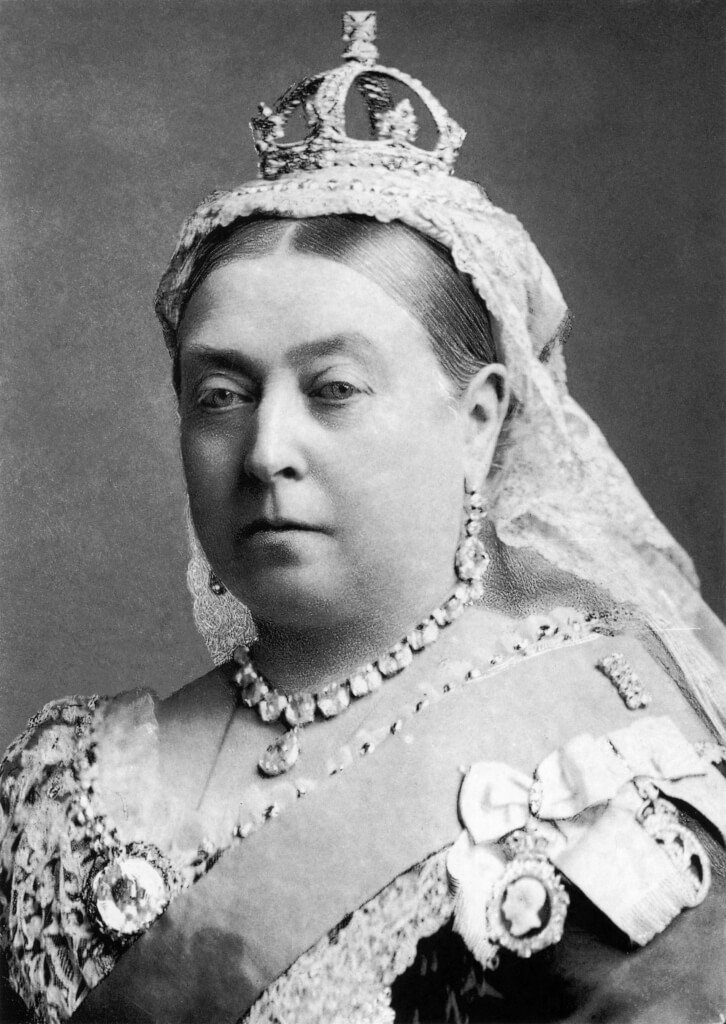

Queen Victoria’s approach to mourning set a lasting example for British royalty, a tradition that persists even today. British royals continue to wear black attire and pearls during mourning, a nod to the historical precedent set by Queen Victoria. Mourning pearl jewelry holds profound significance within the royal family, a tradition passed down through generations. After the recent passing of Queen Elizabeth II, the Princess of Wales wore pearls as a tribute, echoing Queen Elizabeth II and the Queen Mother, who also donned pearls at Princess Diana’s funeral in 1997. This enduring custom illustrates the lasting influence of Queen Victoria’s mourning style on royal tradition, highlighting pearls as a timeless symbol of respect and remembrance.
The Mourning Jewelry of Sarah Winchester

Sarah Winchester, one of the wealthiest American women of the Victorian era, inherited an astonishing $20 million following the deaths of her husband, William Wirt Winchester, her mother-in-law, Jane Ellen Hope, and her father-in-law, Oliver Winchester. Tragically, she also lost her only daughter just six weeks after birth. Overwhelmed by grief, Sarah moved to California, where she purchased what is now known as the Winchester Mystery House—one of the most haunted locations in the world. With her immense fortune, she continued the endless construction on this sprawling mansion until her passing in 1922.
During her lifetime of sorrow, Sarah had several pieces of mourning jewelry crafted as tributes to her loved ones, which are now displayed at the Winchester Mystery House Museum. These pieces capture the Victorian era’s deep association between grief and personal adornment. Today, Sarah Winchester’s legacy is preserved not only through her mansion but also through the mourning jewelry that symbolizes her profound personal losses.

Many believe that mourning jewelry became less prominent as photography became more available and an easier method of remembering those we have lost but not forgotten.
While You’re Still Here…
If you have a vintage mourning jewelry piece, or jewelry of any kind for that matter, you can be sure to trust it to the hands of our Master Craftsmen right here at My Jewelry Repair. Our simple ordering process lets you easily mail your jewelry to our certified specialists for a free evaluation. Choose the repairs you want, and we’ll take care of the rest, sending your repaired jewelry right back to you.

Check Out the Magic of Our Jewelry Services!
Resources:
- The Dark Beauty of Mourning Jewellery: https://www.antiquejewellerycompany.com/
- The Fascinating History of Mourning Jewelry: https://waltonsjewelry.com/
- ¹Mourning Jewelry with Hair: https://commons.wikimedia.org/
- ²Queen Victoria: https://commons.wikimedia.org/
- ³Sarah Winchester: https://commons.wikimedia.org/
- ⁴Winchester Mystery House: https://commons.wikimedia.org/
- Blog outline and revising assisted by AI resources such as Google Gemini.
Last updated 10/11/2024
